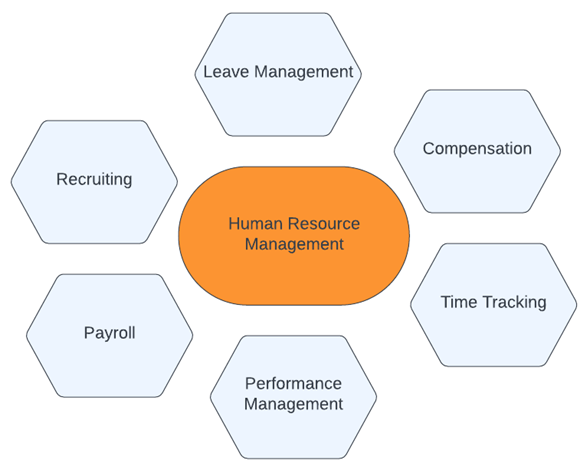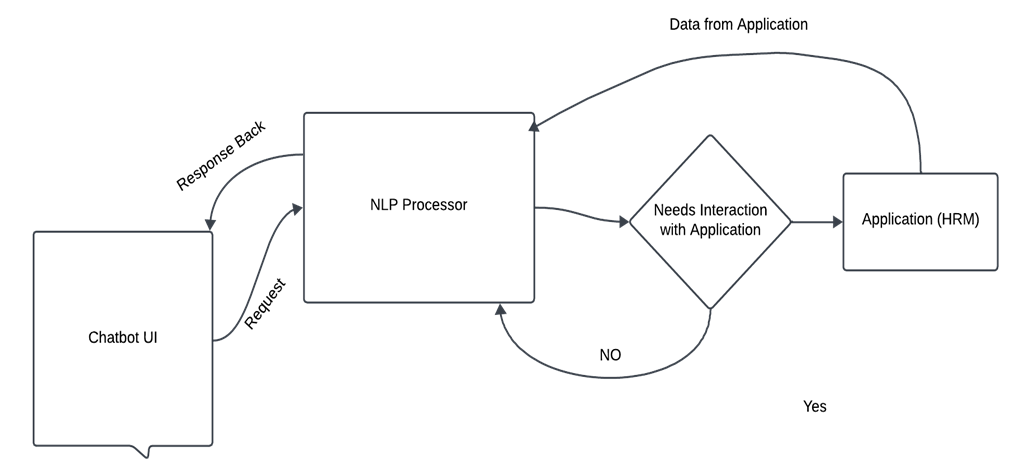-
Paper Information
- Paper Submission
-
Journal Information
- About This Journal
- Editorial Board
- Current Issue
- Archive
- Author Guidelines
- Contact Us
Human Resource Management Research
p-ISSN: 2169-9607 e-ISSN: 2169-9666
2024; 13(1): 1-4
doi:10.5923/j.hrmr.20241301.01
Received: Jan. 20, 2024; Accepted: Feb. 2, 2024; Published: Feb. 5, 2024

Innovation in HR Tech – Impact of AI and Chatbots
Pranay Kumar Laxmipuram
Independent Researcher, Phoenix, Arizona, United States of America
Correspondence to: Pranay Kumar Laxmipuram, Independent Researcher, Phoenix, Arizona, United States of America.
| Email: |  |
Copyright © 2024 The Author(s). Published by Scientific & Academic Publishing.
This work is licensed under the Creative Commons Attribution International License (CC BY).
http://creativecommons.org/licenses/by/4.0/

Every organization in the era of Industrial Revolution 4.0 strives to automate processes using advanced technologies. Artificial Intelligence is one of the most recent advancements in the era of 4IR (4th Industrial Revolution). Using Machine Learning (ML) and Natural Language Processing (NLP) in AI, there can be a lot of processes that can be automated in the Human Resource Management (HRM) system. AI streamlines employee operations and automates workflows leveraging decision-making capabilities using ML and NLP. Adoption of AI in HRM can help improve efficiency and ultimately redesign the landscape of Human Resource Management Systems (HRMS).
Keywords: Chatbots, Automation, Human Resource Management, Artificial Intelligence, Fourth Industrial Revolution
Cite this paper: Pranay Kumar Laxmipuram, Innovation in HR Tech – Impact of AI and Chatbots, Human Resource Management Research, Vol. 13 No. 1, 2024, pp. 1-4. doi: 10.5923/j.hrmr.20241301.01.
Article Outline
1. Introduction
- With the rise of technology in the 4th Industrial Revolution (4th IR), there will be a lot of changes in the way individuals operate on a day-to-day basis [1]. Artificial Intelligence, the Internet of Things (IoT), and Bots are some of the most recent advancements in the field of technology. Many organizations are leveraging these advanced technologies to help automate processes in different domains. Integrating these technologies into an organization helps in many ways, cost saving and efficiency are two main ones to call out. Artificial Intelligence is defined as computers with software technology programmed to perform the same task that would take a highly scholarly person to complete. It uses Machine Learning (ML) and Natural Language Processing (NLP) to perform these tasks [3]. Artificial Intelligence is currently being used very widely from manufacturing to automatic self-driving cars. It is estimated that around 70% of organizations would use AI in at least one way [5]. This article talks about leveraging AI in the field of Human Resources and its different functional domains. Human Resource Management (HRM) is a system of records that manages employee work and employment relationships [4]. HRM has many functional areas where AI can help automate including Recruiting, HR Operations, and employee management. Along with different functional areas, AI also helps in HR Analytics to help stakeholders make organizational decisions. This paper discusses how AI helps in automating different processes in HRM along with some challenges in implementing these advanced technologies.
2. Artificial Intelligence
- Artificial Intelligence is being adopted quickly by different kinds of organizations. To be successful in the implementation of AI in an organization, one should carefully understand the implementation strategy. Improper techniques of AI can hurt an organization.
2.1. Domains in AI
- AI has multiple domains and each domain has unique characteristics. Depending on the type of organization, the right domain has to be picked to implement the AI that increases efficiency and accuracy. Three main domains of AI are Machine Learning, Deep Learning, and Natural Language Processing [6]. Depending on the type of application where AI needs to be implemented in the organization, the right domain needs to be picked.
2.2. AI Implementation Strategy
- To implement AI, one needs to carefully adopt an implementation strategy. Successful implementation of AI contains five key steps – Identifying the Problem – a place where there is scope for automation, Gathering quality data, domain selection, Integration, and AI adoption among employees [7]. The right implementation strategy with quality data and the right domain selection will help an organization successfully integrate AI with its applications.
3. AI Domain in HRM – NLP (Chatbots)
- As discussed previously, AI contains different domains and the right domain needs to be picked to help automate different processes. Depending on the nature of the business, organizations adopt the right domains. In the field of HRM, Natural Language Processing is commonly used. NLP is used commonly in Chatbots and Virtual Assistants. Chatbots and Virtual Assistants are used in HRM to provide effective communication between the system and the employees to provide auto responses without human intervention. Chatbots are nothing but software programs that assist communication between computer and user for various queries from the user. Chatbots are software that are being built by professionals who are experts in the field of AI and NLP [8]. Human Resource Management contains multiple functional areas such as Recruiting, Onboarding, Payroll, Performance Management, Leave Management, Compensation and Time Tracking. Chatbots can be leveraged in all of these functional areas to automate tasks that do not need human intervention.
 | Figure 1. Different Functions in HRM System |
3.1. Chatbots - Functionality
- Chatbots and Virtual Assistants are programs that leverage Natural Language Processing to help respond to queries from employees. Chatbots are built using AI and are then integrated with applications to respond to queries. Chatbot integrates with the HRM system in places where the data needs to be extracted from the HRM system. Chatbot accepts the queries from a UI and is then fed to the NLP to come up with a decision whether it needs to connect to an application (like HRM) to extract the data and parse it as a response back to the users. NLP is the powerful engine behind the scenes that parses the request and helps in decision-making [9]. Two types of queries can come from the user1. Queries that NLP can respond to immediately2. Queries where NLP connects to an application to respond – often with the data that is extracted from the target application
 | Figure 2. Chatbot Process – Automation resolution |
3.2. Impact of Chatbots
- Implementing Chatbots has some major impacts on organizations. Some of the main advantages include
3.2.1. Employee Experience
- Chatbots interact with Employees in real time via chat. Helps employees get the request answered instantaneously. Chatbots help employees experience in a way they do not have to worry about reaching out to HR Operations every single time they need some queries answered, be it a small one or a bigger ask [11].
3.2.2. Seamless Integration
- Chatbots interact with employees using a chat window but from a system architecture, these bots can connect to multiple applications to process the queries in real-time. Integration with all the applications makes the AI and Chatbots more effective and accurate.
3.2.3. Employee Engagement
- Based on the trends coming in from Chatbots and leveraging HR Analytics, organizations can take necessary actions to proactively solve the issue rather than being reactive. Chatbots can connect to the data warehouses to provide accurate analytics on trends.
3.3. Chatbot in HRM System
- AI – Chatbots in particular can be used to automate a lot of processes in HRM systems. Chatbots use one UI chat box but behind the scenes can integrate with multiple applications to provide accurate responses back to the user. In the HRM landscape, there are three major areas where Chatbot play a crucial role.
3.3.1. AI in Recruiting
- Chatbots can connect to the HRM Recruiting system to help recruiters better assist the candidate in the recruiting process. Chatbots/AI can help recruiters screen resumes, assess candidates, and help with communications back and forth. AI can also help in better candidate search using the keyword on the job description. Google uses AI in recruiting to predict the best candidate for a job [13].
3.3.2. HR Operations
- HR Operations is one of the most common use cases of Chatbots in HRM. HR operation involves taking requests from employees about various issues in HRM and responding with the right response that often contains data from the HRM system. Chatbot can effectively take the queries from the employees, connect to the HRM system, and respond with an accurate result. The most commonly used functional areas where Chatbot can help enhance operations are Recruiting, Core HR, Payroll, and Leave Management.Chatbots also support a wide range of employee queries in Core HR, Payroll, and Leave Management. Bots would connect to the HR system and respond to user queries using NLP (Natural Language Processing) and NLU (Natural Language Understanding).
3.3.3. Document Search and Retrieval
- AI and Bots in particular can connect to a Document Management System or HRM system to search for documents and respond to the user as part of a query. One best example is distributing documents during the Onboarding process.
3.3.4. HR Analytics
- HR Analytics (HRA) plays a crucial role in an organization. HRA system provides insight into trends and metrics for the leadership to make key decisions related to organizations and teams. Often, these analytics are multi-dimensional. AI can leaders look at the data models and make strategic decisions based on the trends. Looking at the data pattern from the dashboard and metrics built into HRA, managers, and leaders can assess the positive and negative sentiments and make decisions accordingly.AI also helps in how workforce management is being looked at. It will help increase productivity and help humans to perform their duties efficiently. While AI, using bots and virtual assistants helps a lot in HRM systems, there are some challenges in implementing it. Organizations need to carefully evaluate these challenges to make sure that these technologies are the right fit for them. Starbucks, an American Multinational company uses AI uses different parameters to forecast the headcount and staffing needs [13].
4. Challenges in AI Implementation
- Artificial Intelligence has changed how organization automates their business. Leveraging Machine Learning, AI can automate a lot of repetitive tasks. While there are many advantages of implementing AI in different workstreams of an organization, there are certain challenges in implementing the technology.
4.1. Availability of AI SME (Subject Matter Experts)
- To implement AI in an organization, businesses would need to find the right employees who are subject matter experts in the field of AI. It is increasingly difficult to find an expert in the area of AI and it is more complex to train your current employees in the field of AI due to the complex nature of the technology.
4.2. Cost
- Implementing AI is very expensive. From finding the right resources to the hardware and software needed to develop it, everything comes with a big price tag [12].
4.3. Integration with Applications
- Integrating AI with other applications like HRM is not just like downloading a plugin. It involves extensive development efforts to integrate these applications with AI.
4.4. High Expectations on AI
- AI uses the data provided to come up with decision-making, often once the AI is implemented, stakeholders consider things will be perfect but it only depends on the data provided to AI.
5. Conclusions
- AI using Chatbots and Virtual Assists helps automate a lot of the processes in the HRM system. Bots can interact with the employees to provide appropriate responses leveraging NLP, NLU, and ML. AI helps reduce the human effort to respond to repetitive tasks and helps improve the efficiency of the personnel within an organization. AI helps leaders in an organization to make key decisions using a data-driven approach thus helping the organization to grow. Even though there are several advantages to using AI, there are certain challenges too. Skill gaps, rigorous training, Employee Trust, and Integration compatibility are some of the common challenges with implementing AI. Organizations should consider evaluating these challenges before implementing these technologies.
 Abstract
Abstract Reference
Reference Full-Text PDF
Full-Text PDF Full-text HTML
Full-text HTML